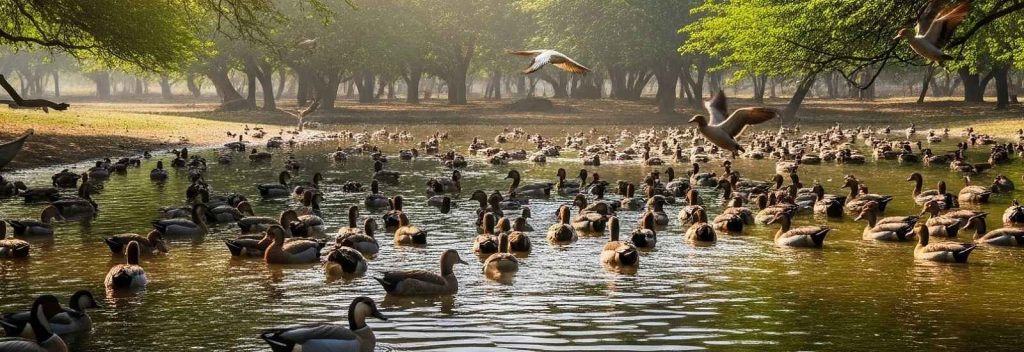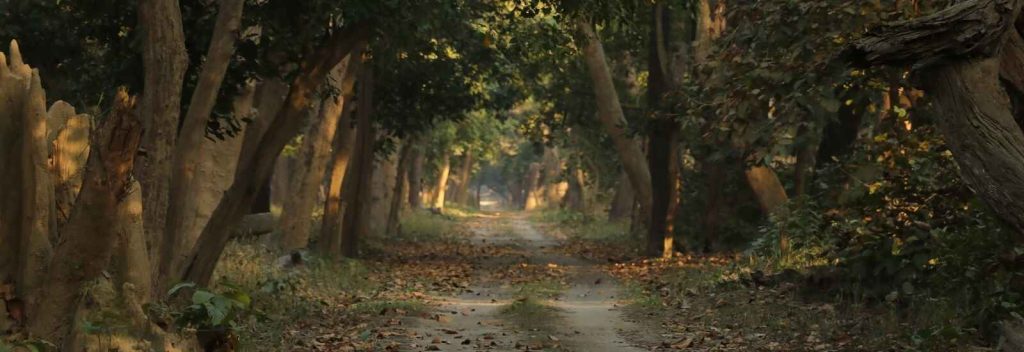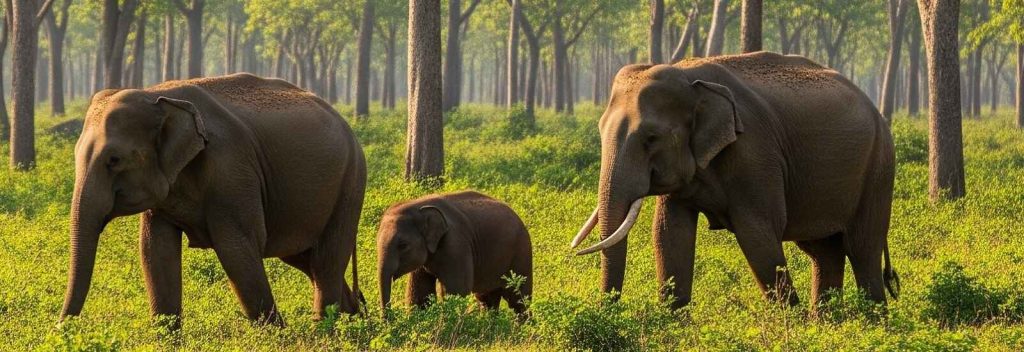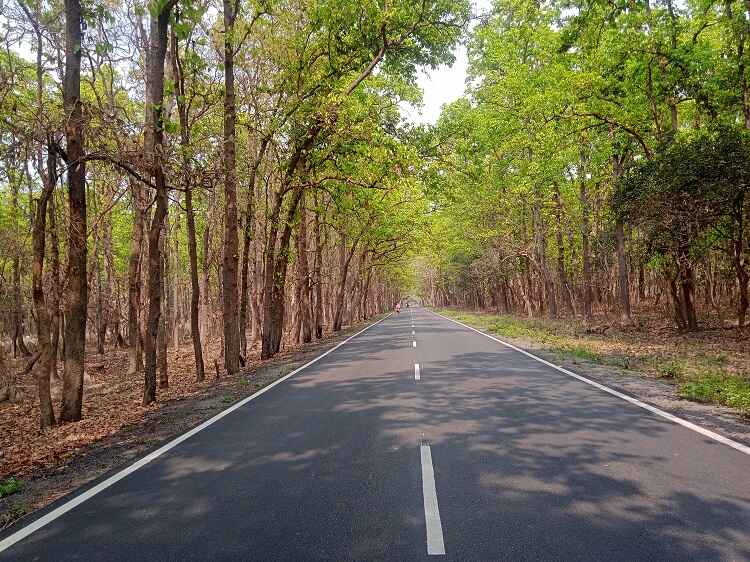The Katarniaghat Wildlife Sanctuary, located in the Terai arc in Uttar Pradesh, is not only known because of its rich biodiversity and endangered species, but also because of its calm, almost unknown forest paths. In case you are a traveller and your adventure is to get out of the normal jeep tours and into the trail on foot, then these mystic paths will be your call to action. Trekking in such old paths provides a close walk with nature, free of the roaring engine of the Jungle Safari trucks.
Why Choose Forest Trails in Katarniaghat?
Although Jungle Safaris are quite exciting as far as viewing exalted creatures found in a reserve such as the`. Bengal Tiger, the Gangetic Dolphin, and a paddock of deer are concerned. Forest tracks at Katarniaghat allow one to explore another dimension of this reserve. Going by foot, you hear the forest murmurs, you hear rustling leaves, the cry of birds at a distance, and the smell of earthen sal trees. These pathways are provided with:
Nature Up-Close: Whether it is mushrooms growing out of a log or brightly-colored butterflies jumping in and out of the sunlit forest floor, passing as you stroll along the walking trail, you get some of the smallest images that you would otherwise have overlooked as you rode by.
Birdwatching Opportunities: Forest paths are ideal for spotting birds that live in the forest, such as woodpeckers, pittas, hornbills, and barbets.
Botanical Diversity: Learn about medicinal plants, rare orchids, and native plants wandering through shady glades and wetlands.

Famous Forest Trails in Katarniaghat
1). Girwa River nature walk
This serene route runs along the bank of Girwa River, and it is ideal in the early mornings. In the river, you may find birds such as Osprey, Kingfishers, and very rarely Gangetic Dolphin.
2). Sal Forest Trek
The mystical environment is provided by dense sal forests and their tall canopies. This path will be a nice place to observe pugmarks, scat, and the rest of the animals, such as the barking deer and the jungle cats.
3). Wetland Loop Trail
This path winds along the wetlands and the oxbow lakes, a resort of migrating birds and amphibians. Be on the lookout for turtles, frogs, and also that secretive fishing cat.
4). Eco-path Buffer Zone
This trail is going through the buffer zone where both man and wildlife exist. A wonderful opportunity to learn how to live a sustainable life and support local conservation efforts.
Guided Nature Walks
In order to be safe and have some educational experience, it is better to choose guided treks conducted by trained naturalists. We have designed jungle walks and eco-treks, which:
![]() Assist you in recognizing the tracks of animals as well as plant species.
Assist you in recognizing the tracks of animals as well as plant species.
![]() Tell jungle stories and legends.
Tell jungle stories and legends.
![]() Minimize the interference with the habitat.
Minimize the interference with the habitat.

Best Time for Forest Trails
Winter (November to February): Nature walks. The winter season takes place between November and February and is characterised by dry weather conditions and a lot of bird life, which makes it an ideal time to go on nature walks.
Post-Monsoon (September to October): Mushrooms, insects, and amphibians become more active; the forest is green and lush.
March to April: good visibility in forest interiors and active mammals.
It is recommended that people avoid monsoon (June to August) when walking trails as the trek gets slippery and the forest is closed.
Jungle Safari vs. Jungle Walks
Although both are unique experiences of wildlife, jungle walks will allow you to:
![]() See smaller forms of life which would be overlooked in an automobile.
See smaller forms of life which would be overlooked in an automobile.
![]() Spend less time with engine sounds.
Spend less time with engine sounds.
![]() Associate with the jungle in a more relaxing, meditative way.
Associate with the jungle in a more relaxing, meditative way.
![]() To have a complete experience, ensure that you combine Jungle Safari tours with the explorations of forest trails when you are in town.
To have a complete experience, ensure that you combine Jungle Safari tours with the explorations of forest trails when you are in town.

Safety Notes about Jungle Treks
![]() It is best to have an experienced guide or a naturalist during such trips.
It is best to have an experienced guide or a naturalist during such trips.
![]() Bring water and put on the thick hiking shoes.
Bring water and put on the thick hiking shoes.
![]() Strong perfumes are a no-no, and the colors should be dull and earthy.
Strong perfumes are a no-no, and the colors should be dull and earthy.
![]() Keep your mouth shut and your eyes open and avoid moving off-trail.
Keep your mouth shut and your eyes open and avoid moving off-trail.
![]() Keep your distance from wild animals.
Keep your distance from wild animals.
Extend Your Adventure with other nearby destinations
Once you have played with Katarniaghat trails, you may want to muse with the other wilderness treasures:
Kishanpur Wildlife Sanctuary: It is famous in terms of forest birds and silence.
Dudhwa National Park: Here, a combination of short forest walks along with jeep safaris is provided.
Pilibhit Tiger Reserve: The grassland birds and jungle corridors are known to it.
Bardiya – National Park (Nepal): A glimpse of the elephants, rhinos, and additional birds can be seen simply crossing the border and entering this national park of Nepal.
Reserve your Forest Trail With Us
We are the safest, most informed, and eco-friendly venture in trekking ecstasies. Their experts have trained guides who aim at making your forest experience more exciting, be it bird watching, taking photographs, or just enjoying nature.

Final Thoughts
Trails in Katarniaghat are not mere paths; they are wonders of nature through the living, breathing forests. They provide a stronger bond to wilderness and remind us about the complexity of nature. Being a first-time visitor or an experienced naturalist, a walk on these trails will impress you with a feeling of awe and admiration for this pristine paradise.
Lace up your marching boots, get your binoculars ready, and be prepared to enter the wild heart of Katarniaghat!


 How To Reach Katarniaghat
How To Reach Katarniaghat
